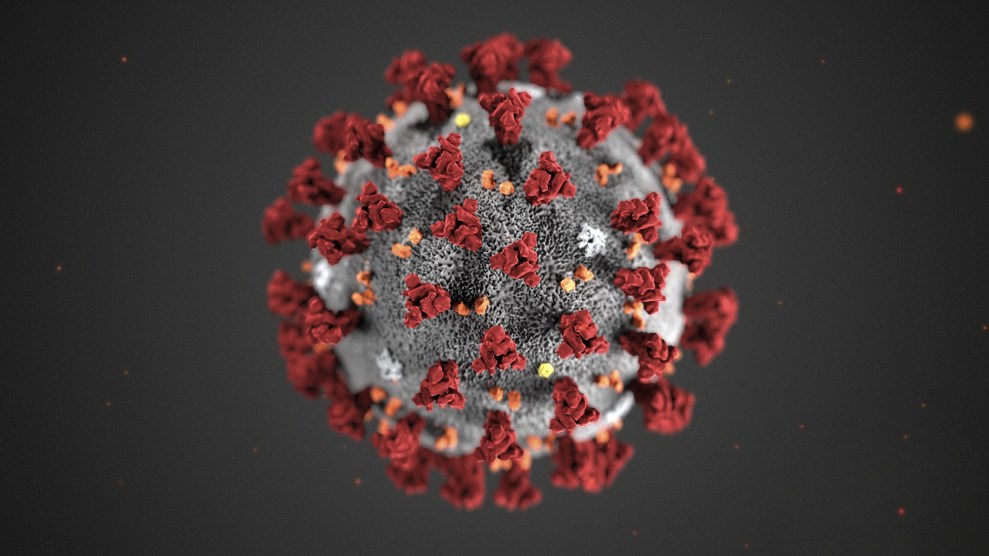
CDC/Planet Pix via ZUMA
Columbia University virologist Angela Rasmussen on the estimate that two percent of the people who are infected with the coronavirus will die:
That could certainly change. The China CDC published a report in which they looked at like 45,000 patients and calculated that case fatality rate based on that. Prior to that, the fatality rate was being estimated at around 2 or 3 percent. So that is one of the numbers that has remained fairly consistent. My personal opinion, though, is that the case fatality rate could actually be much lower if there’s a bunch of mild cases that we’re not being able to test for.
….We know that once we get past about age 50 or 60, that case fatality rate starts increasing. It’s 0.1 percent or 0.2 percent for people, I think, through age 49. And then ages 50 through 59 goes up to 1 percent. Then it goes up to like 3 percent [for patients in their 60s and 70s] and then it goes, age 80-plus, to like 14 percent case-fatality rate. It really depends on the population that the virus is affecting. Also people with preexisting conditions also have a higher case fatality rate. So that would be like heart disease, diabetes, and asthma.
On what to do if you start to feel sick:
It’s still flu season. I would treat this same way we would treat the flu. Don’t freak out….And if you really do need care, then you should definitely seek it out. You shouldn’t wait until you’re, like, dying of pneumonia before going to the doctor.
….The good news is that because in the majority of patients it’s mild, what we should be telling people is that if you are in a low risk group, you don’t have to rush the hospital. You should stay home and recover. So that the hospitals are not going to be overburdened with, with otherwise healthy people, when they need to be using their resources for treating the people who are likely to have more severe illness….The virus, I’m not as worried about. I’m much more worried about what people’s reaction is going to be — and how our public health system is going to be handling them.
On previous pandemics:
I don’t remember people being this crazy during the 2009 flu pandemic. That had a much higher case fatality rate in some communities — from four up to almost 20 percent. So in that sense, this virus isn’t that different from other pandemic viruses that we’ve dealt with before.
The best thing you can do is wash your hands frequently. Soap breaks down the lipid membrane that surrounds the coronavirus and kills it. Hand sanitizers also work as long as they’re 60 percent alcohol or higher.

















